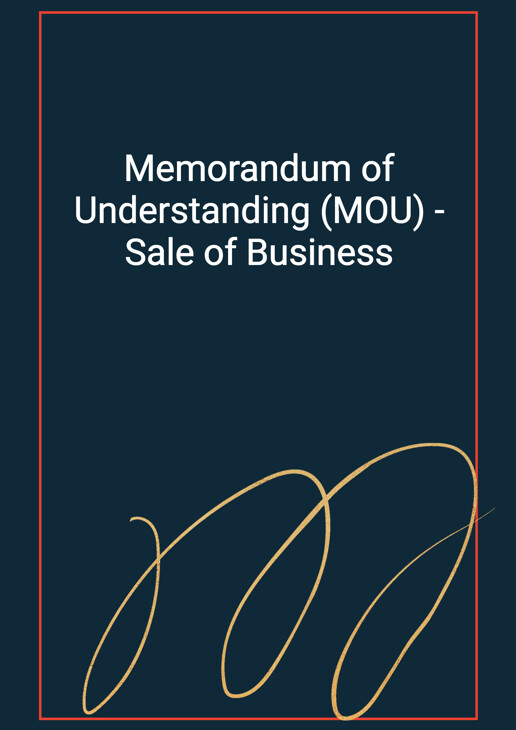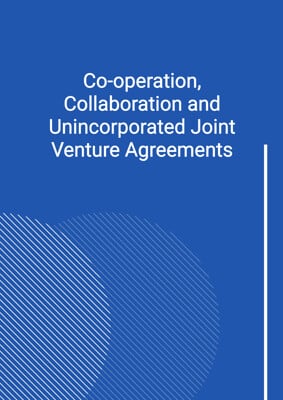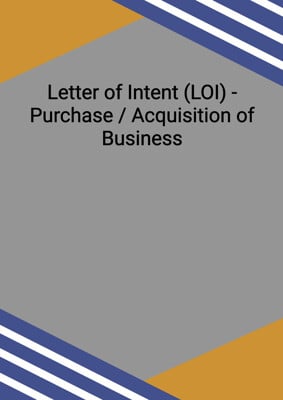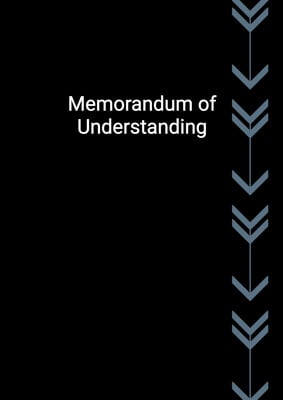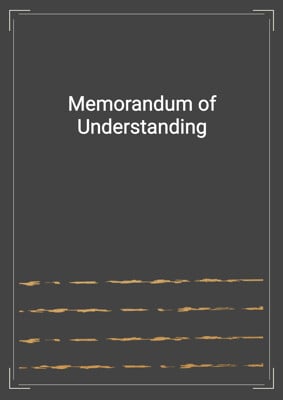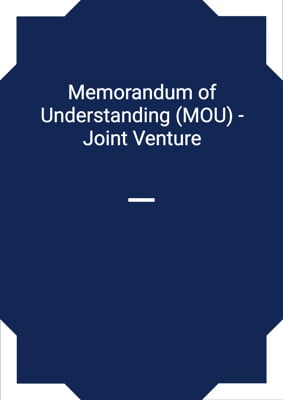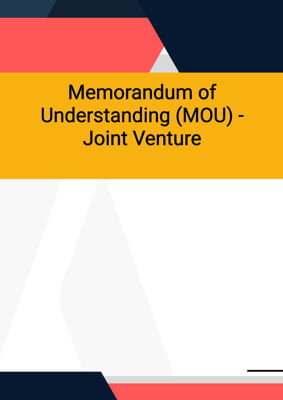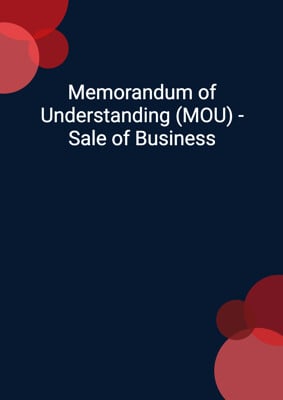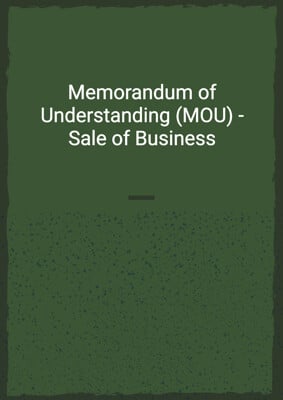How to Tailor the Document for Your Need?
01
Create Document
Fill in the details of the parties. You can click the "Fill with Member’s Information" button to complete it with information saved to your account.
02
Fill Information
Please fill in any additional information by following the step-by-step guide on the left hand side of the preview document and click the "Next" button.
03
Get Document
When you are done, click the "Get Document" button and you can download the document in Word or PDF format.
04
Review Document
Please get all parties to review the document carefully and make any final modifications to ensure that the details are correct before signing the document.
Document Preview
Document Description
The Memorandum of Understanding (MOU) - Sale of Business is a document that outlines the general terms and conditions of a proposed acquisition of a proportion% interest in a target business. The MOU is entered into between the buyer and the seller, who are identified as Party 1 and Party 2 respectively. The document begins by highlighting the importance of setting out the terms of the acquisition in the MOU and the commitment of both parties to agree on the detailed terms of the transaction.
The proposed transaction involves the buyer acquiring a proportion% interest in the target business, including all the assets necessary for its operation. The MOU specifies that the buyer may also change the name of the target business within one month following the completion of the transaction.
The purchase price and payment terms are detailed in the MOU. The buyer is required to pay the purchase price, which includes the goodwill and the value of the target's assets as determined by the net asset value (NAV) at the completion date. The payment is to be made in multiple installments, including a deposit to be paid prior to the initiation of due diligence.
During the transition period, the seller is obligated to cooperate with the buyer to ensure the continued operation of the target business. The existing management of the target will remain in place, with new board members appointed by the buyer.
The MOU also outlines the due diligence process, which the buyer is required to complete within a specified period. The proposed transaction is subject to the satisfactory completion of due diligence by the buyer. If the completion of the transaction does not occur within the long stop period, the proposed transaction will terminate.
Confidentiality and announcements are addressed in the MOU, with both parties agreeing to keep information confidential and not to make any public announcements without the prior written approval of the other party.
The MOU also includes provisions for dispute resolution, notices and service, and specifies that no rights of third parties are created by the document. It further clarifies that the MOU is not legally binding and creates no legal obligations, with the proposed transaction proceeding only when definitive legally binding transaction documents are agreed upon and executed by the parties.
Taxes and stamp duty are to be borne by each party in accordance with the applicable laws and regulations.
How to use this document?
1. Identify the parties: Enter the names and principal places of business of Party 1 (buyer) and Party 2 (seller) in the agreement to clearly identify both parties.
2. Specify the proposed transaction: Clearly state the details of the proposed transaction, including the proportion% interest to be acquired by the buyer and the assets included in the transaction.
3. Determine the purchase price and payment terms: Specify the purchase price, including the goodwill and the value of the target's assets. Outline the payment terms, including any deposit to be paid prior to due diligence and the remaining purchase price to be paid on the signing date.
4. Establish the transition period: Define the transition period during which the seller will cooperate with the buyer to ensure the continued operation of the target business. Clarify that the existing management will remain in place during this period.
5. Conduct due diligence: Complete the due diligence process within the specified period. Ensure that the proposed transaction is subject to the satisfactory completion of due diligence by the buyer.
6. Address termination: Specify the long stop period within which the completion of the transaction must occur. Clarify that the deposit is non-refundable unless the termination is caused by the seller.
7. Fulfill closing conditions: Outline the closing conditions, including the requirement for the target to continue its business as a going concern and the approval of the proposed transaction by the target.
8. Consider third party approvals: Identify any third party consents or approvals that may be required, such as consents of other partners or relevant regulatory authorities.
9. Maintain confidentiality and control announcements: Agree to keep information confidential and obtain prior written approval for any public announcements or press releases.
10. Establish dispute resolution mechanisms: Specify the jurisdiction for resolving disputes arising from the agreement.
11. Follow notice and service procedures: Ensure that all notices are in writing and served in accordance with the specified methods and addresses.
12. Understand the non-binding nature of the MOU: Recognize that the MOU is not legally binding and creates no legal obligations, with the proposed transaction proceeding only when definitive legally binding transaction documents are agreed upon and executed.
13. Consider tax and stamp duty implications: Determine the responsibility for taxes and stamp duty, with each party bearing its own taxes and 50% of the stamp duty for the proposed transaction.
Not the right document?
Don’t worry, we have thousands of documents for you to choose from:
